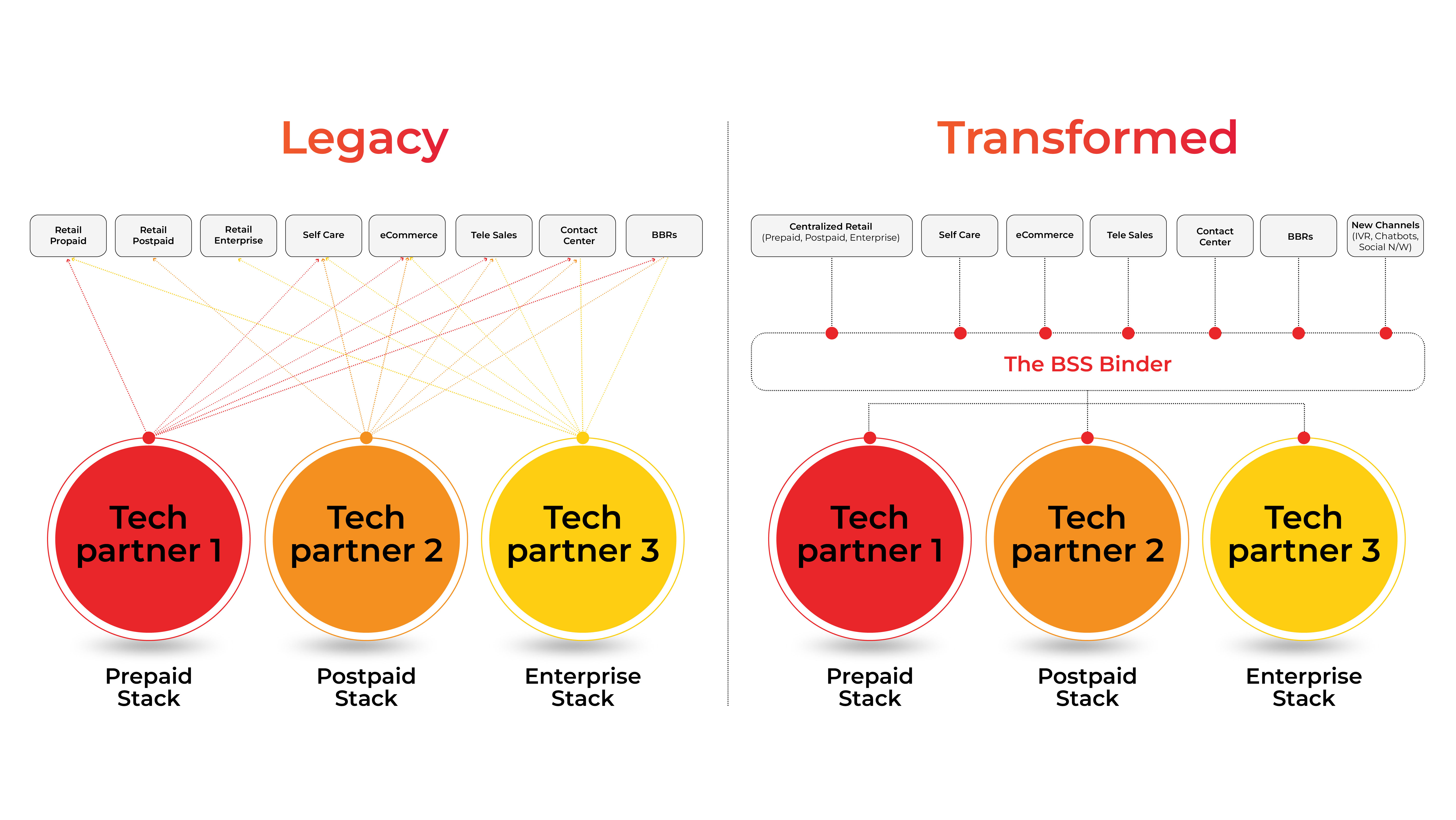“A Missed Opportunity in the Digital Age”
A telecom executive sits in a boardroom, staring at the latest quarterly performance report. Competitors in the digital-native space have just launched a groundbreaking customer loyalty program—offering instant, personalised packages at the click of a button. Meanwhile, their own company is still weeks away from rolling out a comparable service due to delays caused by cumbersome, outdated Business Support Systems (BSS). The executive knows the cost of this delay: frustrated customers, missed revenue opportunities, and the risk of losing market relevance.
This scenario isn’t fiction for many Communication Service Providers (CSPs). It’s a daily reality, underscoring why the time to modernise BSS is not tomorrow—it’s now.
Legacy systems may have served well in the past, but in today’s fast-paced digital economy, they’re quickly becoming the Achilles’ heel of the telecom industry.
The Problem with Old BSS
According to TM Forum, the average time for a CSP to launch a new service can take several months, whereas digital-native companies often achieve this in weeks or even days. This stark difference highlights the operational inefficiency and lack of agility tied to legacy BSS.
Revenue growth further emphasises this gap. Gartner reports that telcos’ average annual revenue growth lags at around 1-2% compared to digital-native giants, which often see growth rates exceeding 10%. Such disparities underline the limitations of outdated BSS in enabling CSPs to compete effectively. More than 70% of CSPs acknowledge that their legacy BSS makes it challenging to innovate and scale—a clear indication that the current systems cannot meet the demands of a fast-paced, digital-first world.
What Stops Them?
Many CSPs are caught in a web of outdated systems, rigid processes, and substantial technical debt. This operational maze results in inefficiencies reduced customer satisfaction and missed growth opportunities. Forrester highlights that the average CSP operates with over 50 legacy systems, creating a complex infrastructure that stifles innovation and drives up operational costs. This landscape leads to slow service rollouts and an inability to respond swiftly to changing market demands.
The Trap of Rip and Replace: Why Full Overhaul Isn’t the Answer
A complete “rip and replace” of legacy BSS is often seen as a solution but comes with significant risks. Research from TM Forum shows that complete overhauls can take up to 5 years and cost hundreds of millions. In a fast-moving industry, this approach can result in extended periods of downtime, disruptions to customer service, and unforeseen operational challenges. For most CSPs, halting business activities to implement a complete system overhaul is neither practical nor cost-effective.
The Overlay Solution: A Way to Modernize Without Disruption
Overlay solutions provide a more flexible, modular approach that allows CSPs to add modern capabilities to their existing BSS. This strategy enables CSPs to transform their systems incrementally without the risks associated with a total replacement. According to Gartner, CSPs that adopted overlay solutions reported a 30% faster time to market and a 40% reduction in operational costs. By leveraging these solutions, CSPs can introduce new functionalities such as real-time analytics, AI-driven customer support, and automated workflows while maintaining business continuity.
Building Blocks of a BSS Ready for the Future: The Overlay Advantage
Overlay solutions are the foundation of a future-ready BSS. They enable CSPs to build and customise their systems incrementally, aligning new capabilities with business objectives. Forrester emphasises that modular architectures enhance scalability and facilitate seamless integration of technologies such as artificial intelligence and machine learning. These capabilities are crucial for CSPs delivering personalised customer experiences and optimising operational efficiency. The flexible nature of overlay solutions allows CSPs to future-proof their systems while minimising disruption.
The BSS Binder: Bridging the Gap Between Old and New
At the core of overlay solutions is the concept of the BSS Binder, a layer that integrates legacy systems with new technologies. This integration layer ensures smooth data flow and operational harmony, creating a cohesive environment where traditional and modern systems work together. The BSS Binder empowers CSPs to harness the benefits of both worlds—leveraging their existing investments while adopting innovative, customer-centric features that enhance service delivery.
 The Next Big Thing in Telecom: Enter the Overlay Era
The Next Big Thing in Telecom: Enter the Overlay Era
The time to modernise is now. CSPs can no longer afford to be held back by outdated, monolithic BSS infrastructures. The shift to overlay solutions offers a path to agility, scalability, and innovation. According to TM Forum, CSPs that adopted an overlay approach saw a 20% improvement in customer satisfaction scores and a marked increase in competitive agility. Transitioning to a modern, flexible BSS is not just an option but a necessity for sustained growth and market relevance.
Embracing overlay solutions means saying goodbye to the challenges of legacy BSS and hello to a future defined by adaptability, speed, and innovation. Overlay solutions offer the road map to turning difficulties into opportunities for CSPs seeking to thrive in a time of rapid technological evolution.


 The Next Big Thing in Telecom: Enter the Overlay Era
The Next Big Thing in Telecom: Enter the Overlay Era



